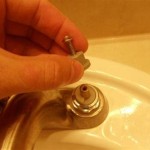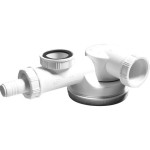How to Change Bathroom Flooring
Updating your bathroom flooring can dramatically transform the space, enhancing its aesthetic appeal, functionality, and overall value. Whether you're looking to replace worn-out tiles, achieve a more modern look, or increase water resistance, a bathroom flooring project is a worthwhile investment. This guide will provide a comprehensive understanding of the steps involved in changing your bathroom flooring, from planning to installation.
1. Planning and Preparation
Before embarking on the project, careful planning and preparation are crucial. First, consider your budget. Bathroom flooring materials range widely in cost, from affordable vinyl to luxurious stone. Determine the desired style and functionality. Do you prioritize water resistance, easy maintenance, or a specific aesthetic? Research different flooring options, considering factors like durability, moisture resistance, and slip resistance. Consult with a professional flooring specialist for expert advice and material recommendations. Once you have a clear vision for your new bathroom floor, gather the necessary tools and materials. This may include a measuring tape, level, cutting tools, adhesives, grout, and finishing touches like moldings or baseboards.
2. Removing Existing Flooring
The first step in changing your bathroom flooring is to remove the existing flooring. This process can vary based on the type of flooring being replaced. For example, removing tile requires using a hammer and chisel or a tile removal tool. Vinyl flooring, on the other hand, may simply peel off the subfloor. It's essential to wear appropriate safety gear, including gloves, eye protection, and dust masks during this phase. Carefully remove all fixtures, such as toilets, sinks, and vanities, before beginning demolition. Work in sections, ensuring the subfloor remains intact during removal. Dispose of the old flooring materials responsibly, following local recycling or disposal guidelines.
3. Subfloor Inspection and Preparation
Once the old flooring is removed, thoroughly inspect the subfloor for any damage or imperfections. Look for moisture, warping, cracks, or uneven surfaces. If any issues are found, address them immediately to ensure a stable foundation for the new flooring. This may involve replacing damaged sections, leveling the subfloor, or applying a moisture barrier. For example, using a leveling compound can create a smooth and even surface for tiles or other hard flooring materials. If the subfloor is sound, clean it thoroughly to remove any debris or dust.
4. Installing the New Flooring
The installation process will depend on the chosen flooring material. For tile, use a trowel to apply thin-set mortar to the subfloor. Lay the tiles, ensuring they're level and spaced appropriately. Apply grout between the tiles, and allow it to cure completely before applying sealant. Laminate flooring requires a moisture barrier and a floating installation method. Vinyl flooring is often installed using adhesive or a click-and-lock system. Each type of flooring has specific installation instructions, so carefully review the manufacturer's guidelines.
5. Final Touches and Maintenance
Once the new flooring is installed, you can add finishing touches to complete the project. Install moldings and baseboards to cover the edges of the flooring and provide a sleek, finished look. Consider adding decorative accents like rugs or mats to enhance the overall aesthetic. Finally, ensure the new flooring is cleaned and maintained according to the manufacturer's recommendations. Regular cleaning and proper care will help preserve the beauty and durability of your new bathroom flooring for years to come.

How To Upgrade Bathroom Tile Without Replacing

How To Remove A Tile Floor

Quick Change Replacing The Bathroom Toilet And Flooring At Same Time Midmod Midwest

Ideas For Covering Up Tile Floors Without Removing It The Decor Formula

How To Cover Up Ugly Floors Without Retiling

Flooring Or Bathtub Which To Install First Badeloft

The Easiest Way To Update Your Bathroom Floor Shaw Versalock Vinyl Plank Flooring Reinvented Delaware

20 Great Examples Of Transitions In Flooring

How To Upgrade Bathroom Tile Without Replacing
Ideas For Covering Up Tile Floors Without Removing It The Decor Formula
Related Posts







